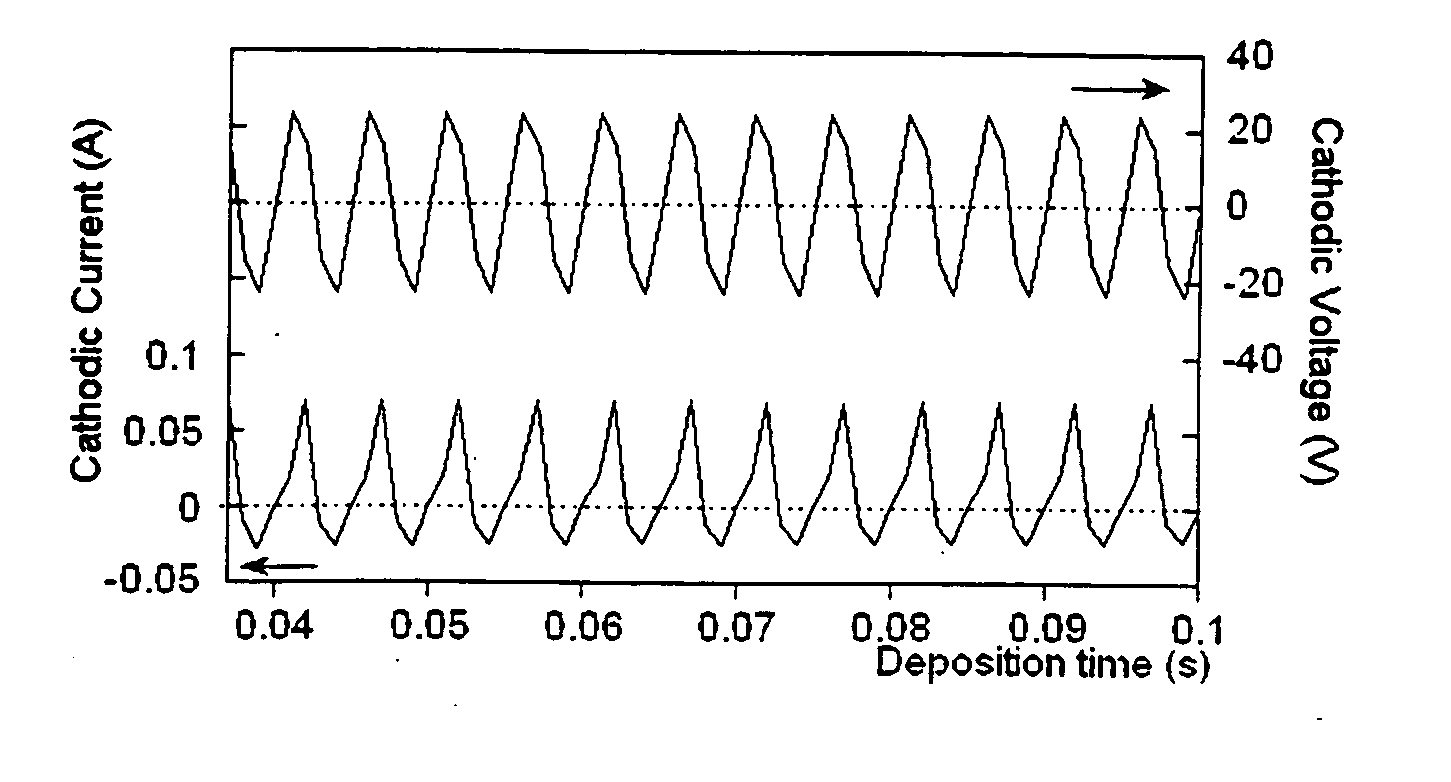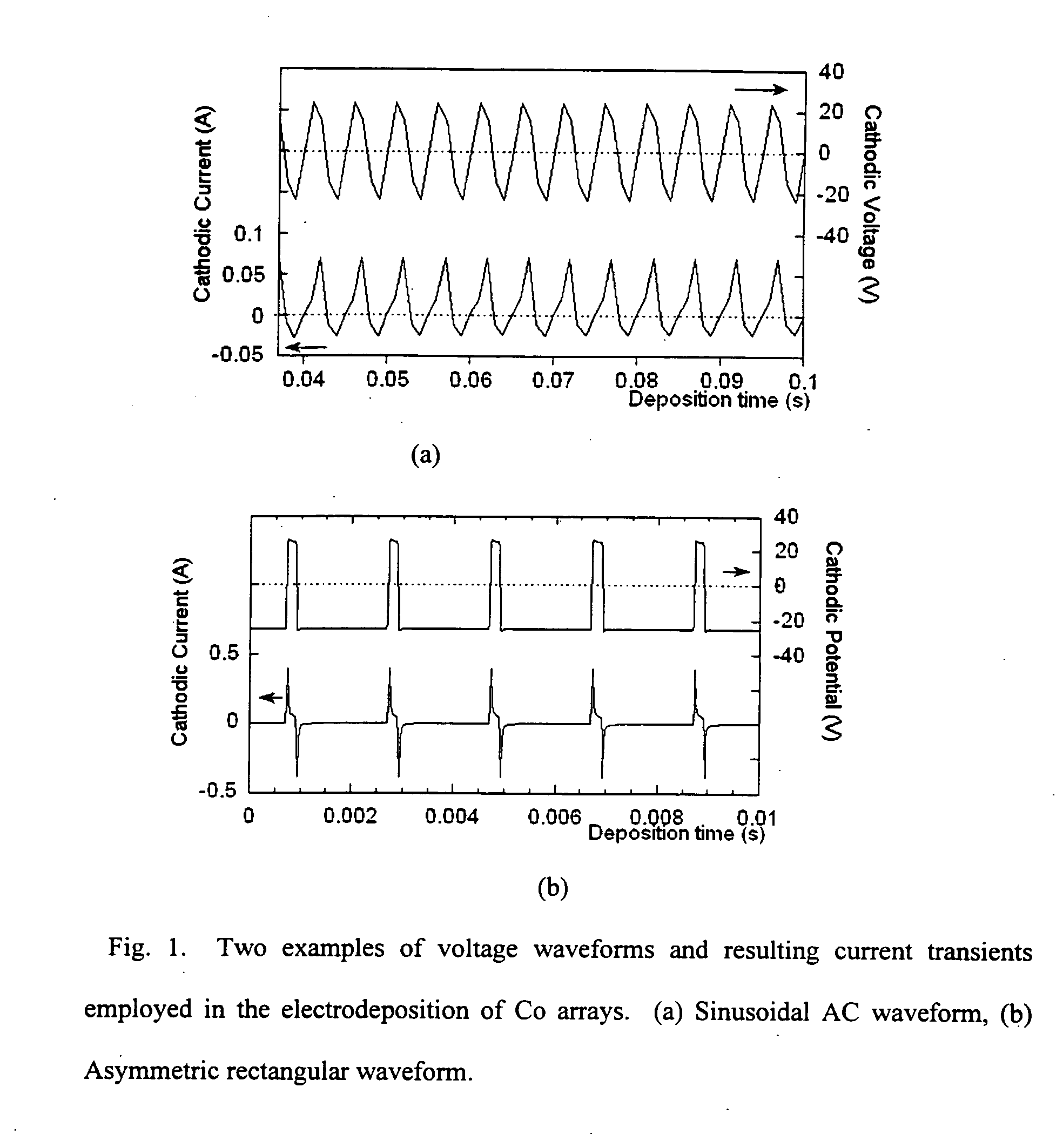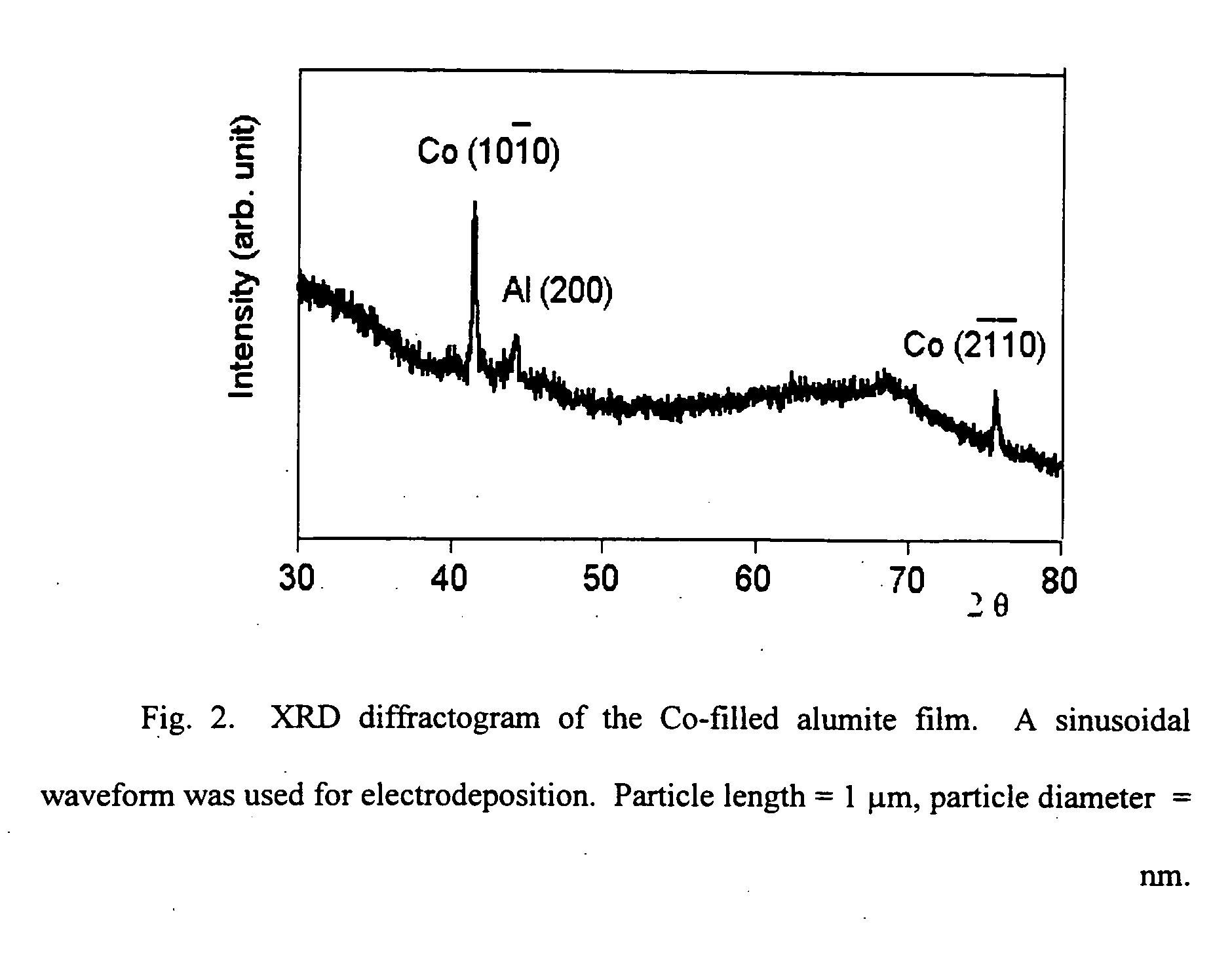Method for the preparation of nanometer scale particle arrays and the particle arrays prepared thereby
a particle array and nanometer technology, applied in special recording techniques, magnetic bodies, instruments, etc., can solve the problems of inability to store information, reach its physical limits, and accompanied granular medium by noise, and achieve high homogeneity
- Summary
- Abstract
- Description
- Claims
- Application Information
AI Technical Summary
Benefits of technology
Problems solved by technology
Method used
Image
Examples
examples
[0056] Anodization—A pure Al sheet (99.998%) was degreased in 5% NaOH solution at 60° C., then rinsed by de-ionized water. In order to smoothen the Al surface, the Al sheet was first electropolished in perchloric acid-ethanol electrolyte, and successively cleaned with warm de-ionized water and air-dried. Masuda's process (as described in Masuda et al, Science, 268, pp. 1466-1468 (1995)) was employed to synthesize highly ordered Al-oxide porous films. The Al sample was first anodized (0.3 M oxalic acid, 40 V DC, 15° C.) for 24 hours, then the oxide film was dissolved away in a mixed solution of 0.2 M H2CrO4 and 0.4 M H3PO4 at 60° C. Finally, one side of the Al sheet surface was anodized again for 0.5-3 hours. Perfectly ordered, hexagonal pore arrays up to 10 μm scale can be achieved by this method. The pore diameter was 25 nm; the pore-to-pore distance was 110 nm.
[0057] Electrodeposition—Cobalt nanowires were grown under voltage control, from an aqueous bath containing 0.1 M CoSO4 a...
PUM
| Property | Measurement | Unit |
|---|---|---|
| frequency | aaaaa | aaaaa |
| areas | aaaaa | aaaaa |
| length | aaaaa | aaaaa |
Abstract
Description
Claims
Application Information
 Login to View More
Login to View More - R&D
- Intellectual Property
- Life Sciences
- Materials
- Tech Scout
- Unparalleled Data Quality
- Higher Quality Content
- 60% Fewer Hallucinations
Browse by: Latest US Patents, China's latest patents, Technical Efficacy Thesaurus, Application Domain, Technology Topic, Popular Technical Reports.
© 2025 PatSnap. All rights reserved.Legal|Privacy policy|Modern Slavery Act Transparency Statement|Sitemap|About US| Contact US: help@patsnap.com



